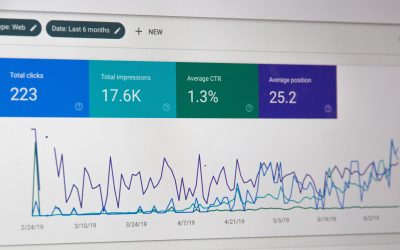With the increasing number of retailers moving towards online sales, Shopify has made building an online storefront more accessible to professionals and amateurs alike. They’ve created a robust platform that can help you start and grow your business, with SEO tools to help you gain more exposure online.
Shopify is a powerful online sales platform, but users must learn how to take advantage of its capabilities. This can be achieved by discovering how to utilize it for product pages, UX enhancement tactics, and various other methods designed to enhance your store’s performance online.
Shopify’s platform can be a little tricky for merchants to navigate on their own, so let us assist you in figuring out how to set up and optimize your online store.
7 Tips for Setting Up and Improving SEO on Your Shopify Site
1. Customize CSS Theme
1. Customize Your CSS Theme
CSS, is a style sheet language that allows you to control your web page’s layout, colours, fonts, spacing, and more. By using CSS to control your webpage’s layout and ensure that the HTML structure is clean and organized, you can make it easier for search engines to crawl, index, and understand it.
Shopify offers a multitude of theme plugins to customize your site and optimize it to suit the needs of your business. However, to achieve a specific look and feel it may be necessary to edit the CSS code.
Before making changes to this code, it is recommended to make a duplicate copy of your current theme. This way if anything goes wrong you are able to revert back to it. To make a copy, navigate to the online store, click ‘themes’, and select ‘duplicate’ from the actions menu. This will also open up the source code editor.
Once you are inside, head to the CSS file entitled ‘theme.scss.liquid’ located in the ‘assets’ folder and then proceed to make your changes to the layout or presentation of your site.
2. Make Navigation Easy by Optimizing Your Site Structure
By making the navigation on your Shopify site easy for users, you are ultimately improving their experience on your site. Google pays attention to user interests and experiences, which is why UI and UX design has become an important part of SEO. If a user can easily navigate a site, your bounce rates, time-on-site, and conversions improve, which in turn results in enhanced SERP rankings.
Consider creating a streamlined site structure to facilitate search engine crawling and ranking of specific pages. A user-friendly search structure typically follows this format: Homepage > Category page > Subcategory page > Product page. Adhering to this framework ensures that the products on your Shopify site are easily accessible and close to your homepage.
Plus, simple and intuitive site architecture and design enhance the user experience, enabling customers to easily navigate your products. Enginess highlights the significance of good, up-to-date modern design in fostering trust, as 94% of respondents attributed their mistrust of a website to its design elements.
3. Improve Your Site Speed
Maximizing your e-commerce site speed also contributes to UX and SEO. A slower loading page can lead to a frustrating user experience, thus leading to a higher bounce rate.
To maximize the load time of the pages on your website, use a PageSpeed Tool to ensure your page is loading at the sweet spot of 1-2 seconds. If not, try a few methods to improve site speed such as compressing and optimizing your images, enabling browser caching, and avoiding using redirects.
4. Get a Handle on the Right Keywords
Identifying the right keywords and using them correctly throughout your Shopify site is crucial, as they speak to the intent of the user. Start by brainstorming the main topics that your customers are searching for and topics related to your industry. You want to align your keywords with what people in your industry are searching for.
Here are some ways to find the right keywords:
- Identify a demographic for your buyers
- Explore forums on topics related to your industry
- Search social media for hashtags related to your industry
- Review titles, meta descriptions and image alt-text that are being used by your competitors.
5. Ensure Your Product Pages Are Optimized for Search and Buyability
Ensuring that your best and most sought-after products are at the forefront of your Shopify site will help users find exactly what they are looking for.
This can be done by using the keywords you’ve just discovered to create a keyword map to optimize your store pages. By keyword mapping, you can ensure that you’re using the right keywords on the right pages and not cannibalizing them.
Creating a keyword map that speaks directly to your customer, and building a site structure that is easy to navigate is essential to put your best product pages forward.
So, how do you do this?
Optimize Your Content, Titles, and Meta Descriptions With Keywords
Write original copy for your website and naturally insert keywords into your website copy, titles, and meta descriptions.
Optimize Your Images With ALT Text
The back end of your photography also presents an opportunity for keywords to thrive. Image ALT Text can hub a ton of keywords to help your products perform better in image search as well as serve as an accessibility resource for visitors who are visually impaired.
6. Build Backlinks to Your Store
Backlinks are a stamp of approval from other sites that tell the public how great you and your services are. They are also important because they build a reputable network of relationships within your industry. Think of them as a great recommendation via SEO.
Backlinks can be difficult to attain but here are some places to get them:
Your Suppliers
Sometimes suppliers will allow you to post a link on their website, advertising that you carry their products. Find their contact info. and send them an email, it never hurts to ask.
Industry Influencers/Professionals
Reach out to industry professionals to create content that will produce links on both ends.
Article Mentions
Ensure that for every mention of your product in an article, there is a link to your website or product pages.
7. Create Quality Content
Creating quality content is another effective approach to optimize your Shopify store. Adding content rich with long-tail keywords onto your web pages, or blog should be a central focus. By prioritizing informative and engaging content, you can enhance your visibility and attract more organic traffic, ultimately improving the overall performance of your e-commerce store.
E-Commerce Services at Method and Metric
By following these tips and leveraging the power of Shopify, you can establish a strong online presence and drive success in the competitive world of e-commerce.
However, if you are finding setting up and optimizing your online store difficult to navigate independently, get in touch to learn how Method + Metric can improve your e-commerce strategy and maximize your store’s potential today.




